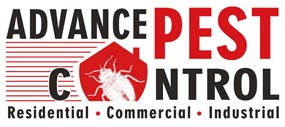Argentine Ants Control
The Argentine ants are believed to have found their way to the US aboard ships ferrying sugar or coffee from Argentina to California during the 1890s; hence the name given to them. Consequently, they multiplied throughout the US especially to the southern side.
No matter how aggressive and troublesome the Argentine ant is, it stands not chance against our dedication towards professionally tackling your ant control issues. We are here to bear the burden of ant control in Vancouver, Tsawwassen, Richmond, Burnaby, Delta, Langley, Abbotsford, Maple Ridge, Coquitlam, Mission, Port Moody, White Rock and Surrey.
Appearance
Argentine ants are generally light brown in color. The worker ants are usually 2.2 – 2.8mm long. The queens are smaller than most ants; 1/6 to ¼ inches in length. Their antennae have 12 strongly elbowed segments. Argentine ants have a single node – petiole – that separates the abdomen and the thorax. The ants emit a musty odor when crushed. They do not have a sting. Their movement is quite, fast and in well-defined continuous trail
Reproduction
Argentine ant colonies have as many as 8 reproductive queens for every 1000 workers. A winged queen mates once with a winged male, after which she can produce fertile eggs for as long as 10 years. The amount of food availed to larvae appears to control the production of male Argentine ants. Similar to most ant species, the worker ants are females lacking the ability to produce fertile eggs. They, however, can direct the development of the eggs into reproductive females.
Argentine ant queens aid their workers by feeding their young ones. They are quite mobile and can be seen with workers outside the nest. The queens’ mobility facilitates the rapid establishment of nest if and when the hostile conditions such as over-crowded colony pressures or unfavorable temperatures. One or more reproductive queens may leave with as few as 10 workers to form a new colony. Lack of water in arid climates restricts their distribution. Argentine ants cannot survive in colder locations too; outside warm human-modified landscapes. They thrive in Mediterranean climates. The construction of nests is done around the original one. Therefore, workers can be shared between nests. This only works to make ant control a lot more difficult.
Habitat associations
The nests of Argentine ants are usually located in moist soil, next to or under buildings, along sidewalks or beneath boards. They are extremely mobile and will often relocate colonies. Foraging ants will enter the house when the conditions outside are extremely wet or dry. Their generation of strong pheromone trails when foraging makes them easy to identify and track. They may also nest in cavities at the base of shrubs and trees. Their nests are often shallow in open habitats, measuring up to 20 cm (approximately 8 inches) in depth.
Argentine ants are aggressive, often eliminating other types of ants in the same area. They also destroy and eat other household pests such as cockroaches and exposed termites. Workers are aggressive to other ant species, and their numerical dominance leads to them displacing other ants. Argentine ants have displaced and killed native ants, many of which are ten times larger.
Diet
Argentine ants are omnivorous. Their workers have sweet food preferences such as plant secretions or fruit juices. They, however, carry back proteins and grease-based foods for the queens and larvae. The gathering of food is done both day and night.
Argentine Ant Control Using Ant Bait
The social structure of Argentine ants has made ants control Vancouver, Tsawwassen, Richmond, Burnaby, Delta, Langley, Abbotsford, Maple Ridge, Coquitlam, Mission, Port Moody, White Rock and Surrey
quite difficult but one which is for sure attainable. The use of residual sprays or dusts stress on ant colonies causes them to split into sub-colonies and scatter. We are aware that this scattering multiplies the number of ant colonies and thereby multiplies your ant problem. That is why the use of slow-acting bait is recommended. Quick-kill insecticides and baits will only kill the foraging ants. This is a good thing since it allows those worker ants to take the bait back home to feed the queen, nest workers, and brood.
In the event that the ants are not coming to the baits, you will definitely need to them. Slow-acting baits provide a variety of the foods the ants find in nature. Examples are other insects, nectar, aphid honeydew, and plant products (sugar and carbohydrates found in sweet-based baits).
Choosing bait requires an understanding of the nutritional needs of the colony. To be sure that you have all the baiting needs met, you may want to be ready with sugar/carbohydrate-based bait, grease/fat-based bait, and protein-based bait.
It is important to note that all other food competition should be removed when baiting. The bait should not be disturbed once the ants start feeding on it.

Protecting your business from pests
After years of experience and expertise, we have formulated state-of-art ants control solutions using spray, baiting and powders to cater to the customized needs of our clients. Fool-proof treatment – We inspect and reach all possible areas.
